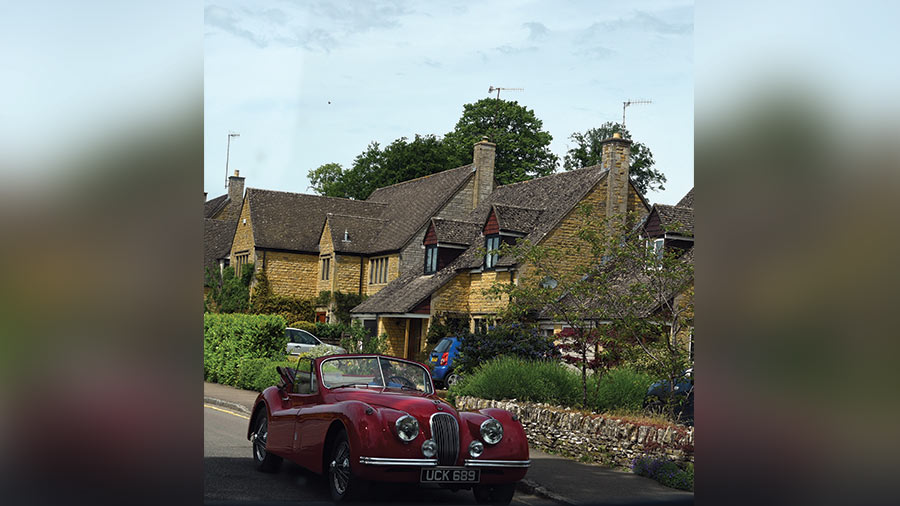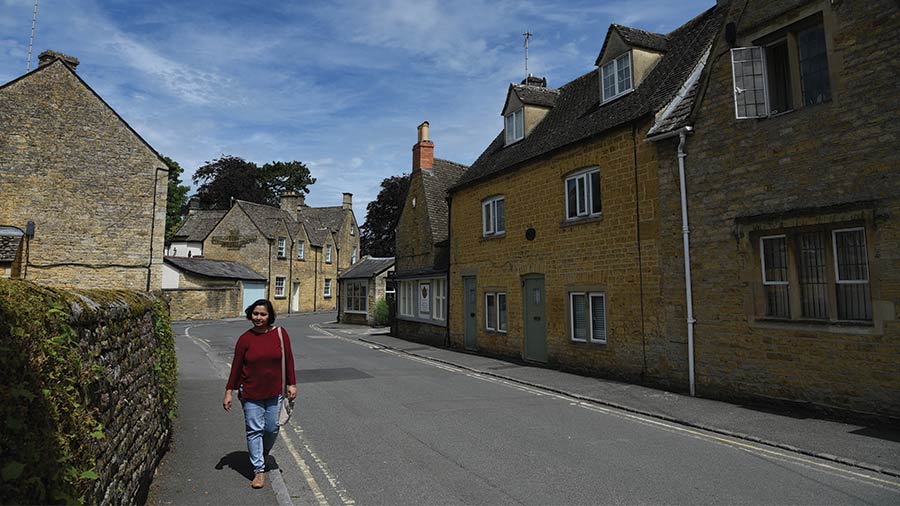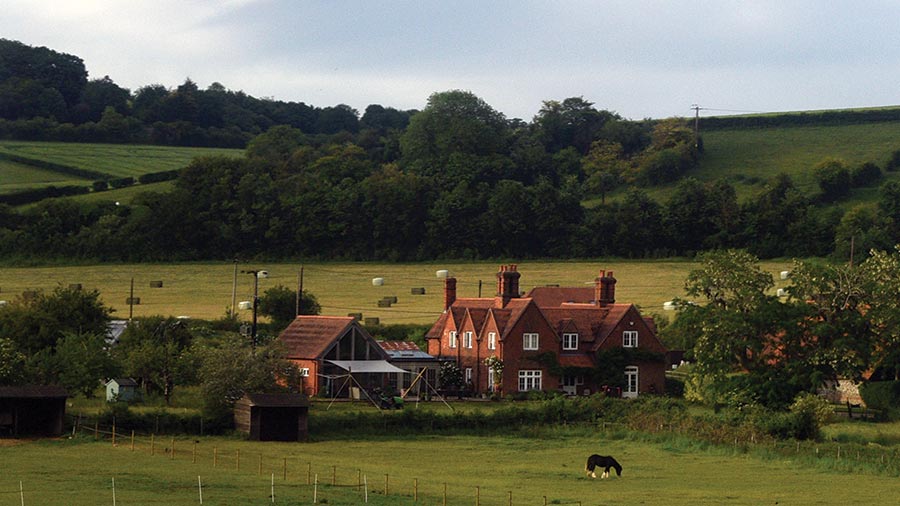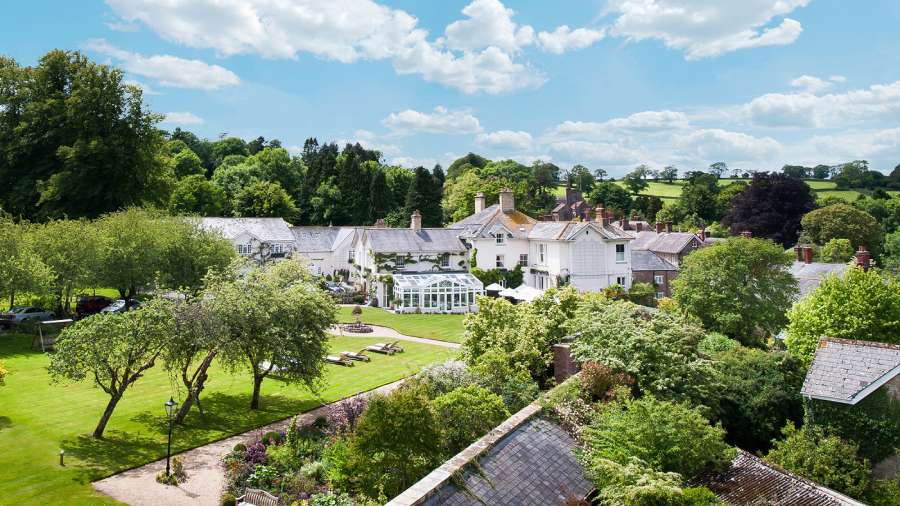On a breezy summer morning, I embarked on a tour of the villages of Cotswolds, famed for their quaint half-timbered buildings, overhanging upper storeys and narrow alleyways. Ian McKenzie, who runs small group tours, led us from the university town of Oxford into the inner recesses of Cotswolds, designated as an Area of Outstanding Natural Beauty, spread across five English counties (Wiltshire, Gloucestershire, Oxfordshire, Warwickshire and Worcestershire).
“The name actually comes from an Anglo-Saxon chieftain named Cod in the 12th century. He owned a vast expanse of ‘wold’ or upland country in this region. Hence, this was Cod’s wold and eventually became Cotswolds,” said Ian.
We had started early from Oxford and planned to drive through a couple of villages in Oxfordshire before reaching Northern Cotswolds in Gloucestershire – the most picturesque part of southwest England.
Minster Lovell, a village with haunted ruins
The first stop was Minster Lovell, an unremittingly pretty village. We walked by honey-coloured buildings overlooking well-kept gardens brimming with summer blooms. A couple of vintage cars passed by, with cheery faces on the wheels. It was a Sunday and an unusually clear summer morning. At the northern edge of the tiny village, it was a short uphill climb surrounded by woodland, a river gurgling its way through it. “This is the river Windrush, and it has journeyed through history,” Ian announced dramatically and pointed to the crumbled ruins of an ancient manor house, standing quietly beside the gushing waters of the river. As we went through the entrance and marvelled at the impressive remnant of the original vaulted ceiling and an ancient dovecote, Ian delved into the chequered past of the manor house of the Lovell family (from which the village derives its name). It is a chilling history during the times of Battle of the Roses in the 15th century. The Lord of the manor got embroiled into it and lost his life in a secret vault inside this house. His skeleton was found nearly three centuries later. ”And that makes this lovely hamlet one of the most haunted villages in England, with ghostly wails in the night around the manor house, that dates back to 1430,” Ian told us, as our small group took a little hasty step back to the car.
Swinbrook, an idyllic village

Local villagers taking out their vintage car on a sunny summer morning
Our next destination was Swinbrook, a short drive of 10 minutes from Minster Lovell. An idyllic village, a pretty church, a cricket pitch with a wooden pavilion and an ochre-hued stone pub beside an arched bridge across River Windrush that trickles by. The setting looks so incredibly vintage that the popular TV series Downton Abbey, a historical period drama set in the early 20th century, was largely filmed in Swinbrook.
Burford, the medieval market town
Burford, dubbed as the ‘gateway of Cotswolds’ was barely 10 minutes’ drive from Swinbrook, but could be a world away from it. The long high street set upon a hillside and flanked with antique shops and funky cafes characterise the medieval market town that was the hub of the booming wool trade for more than half a millennium. The 12th century town church is the oldest building in Burford and in the moody, dimly lit interiors, the graffiti and carvings made by prisoners (it was a temporary prison in the mid-17th century) still survive. When we came out into the sunlit churchyard, Ian showed us the age-worn tombstones with a curious rolled design. “These were bale tombs of the wool merchants of the era, unique to this part of the world,” he informed us.
Stow-on-the-Wold, a village with a historical past

The towns and villages feel like a time warp
The medieval town of Stow-on-the-Wold was our next pit stop. The teeming town square, hemmed in with honey-coloured buildings, tiny tearooms and bookshops belies the bloody chapter of history etched in the annals of this town. In the early spring of 1646, this market square would provide the setting for the last battle of the English Civil War in which King Charles I’s army was defeated by the Parliamentarians. We wandered through the narrow streets, took a quick tour of the town church – an architectural wonder with its beautiful tree-framed doorway and stained-glass windows - before planting ourselves on the wooden stools of Porch House. With its rippled flagstone floors, low-beamed, skewed ceilings and yellowing frames on the walls, the traditional British pub whips up oodles of quirky character. And I almost choked over my tankard of ale when Ian, sitting on the next stool, quietly told me that an inn on this site has been operative since 947 AD, which makes the Porch House the oldest pub in England!
Out of Stow-on-the-Wold and once more we were on the windy country roads, rolling green meadows stretching out on both sides.
Lower Slaughter, a swampy retreat
Shortly, we arrived at Lower Slaughter. A small stream wedges its way through the heart of this picture-perfect village. We walked it's quiet left bank, marvelling at the 16th and 17th century limestone homes with mullioned windows and gabled roofs. At the end of the village, the redbrick water mill dates from the 19th century, now housing a museum, a gift shop and a café. But nothing in this charming Gloucestershire hamlet seemed remotely grisly, and I was expecting a gruesome tale of horror from the sound of its name! Ian explained that the name of the village actually comes off the archaic word “slough” that meant a swamp!
Great Tew, a less travelled destination

The medieval houses are built with locally-sourced golden yellow stones
We drove northeast for about half an hour and looped back into Oxfordshire for our final destination – Great Tew, arguably the most beautiful village of England. We got out of the car and immediately knew why. Perched on a ridge, the village overlooked a beautiful wooded valley with clusters of dark red ironstone cottages with rose gardens in the front. The easy grace of the horses ambling and tottering on the swathes of green completed the spectacle. “This is not quite on the tourist radar because the narrow, winding streets are off limits to the large tour buses,” Ian said. The delightful driveway and the natural park were designed in 1808 by eminent botanist John Louden and has remained unchanged till date.
The mellow afternoon sun glanced off the green Cotswold ridges, as we headed back towards Oxford. I had to catch a 6.35 train from there to London, but had just enough time to find a quaint tea room and indulge in traditional Cotswolds afternoon tea, served with freshly baked scones and clotted cream.








